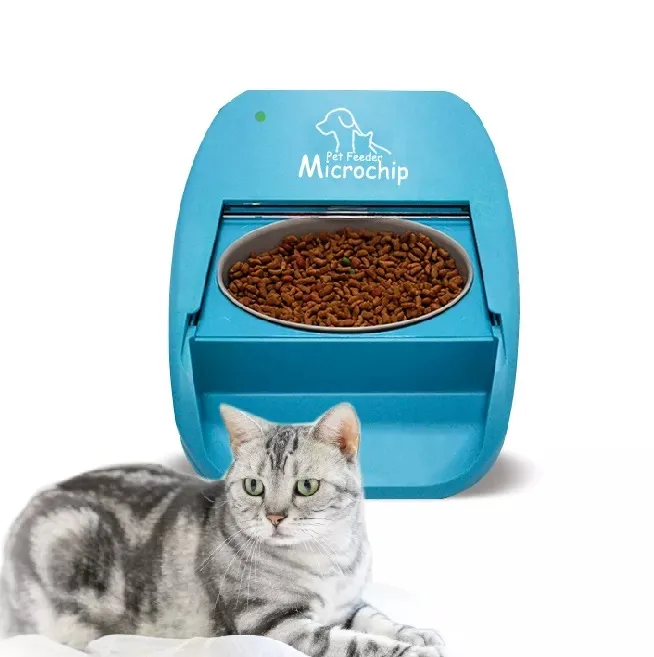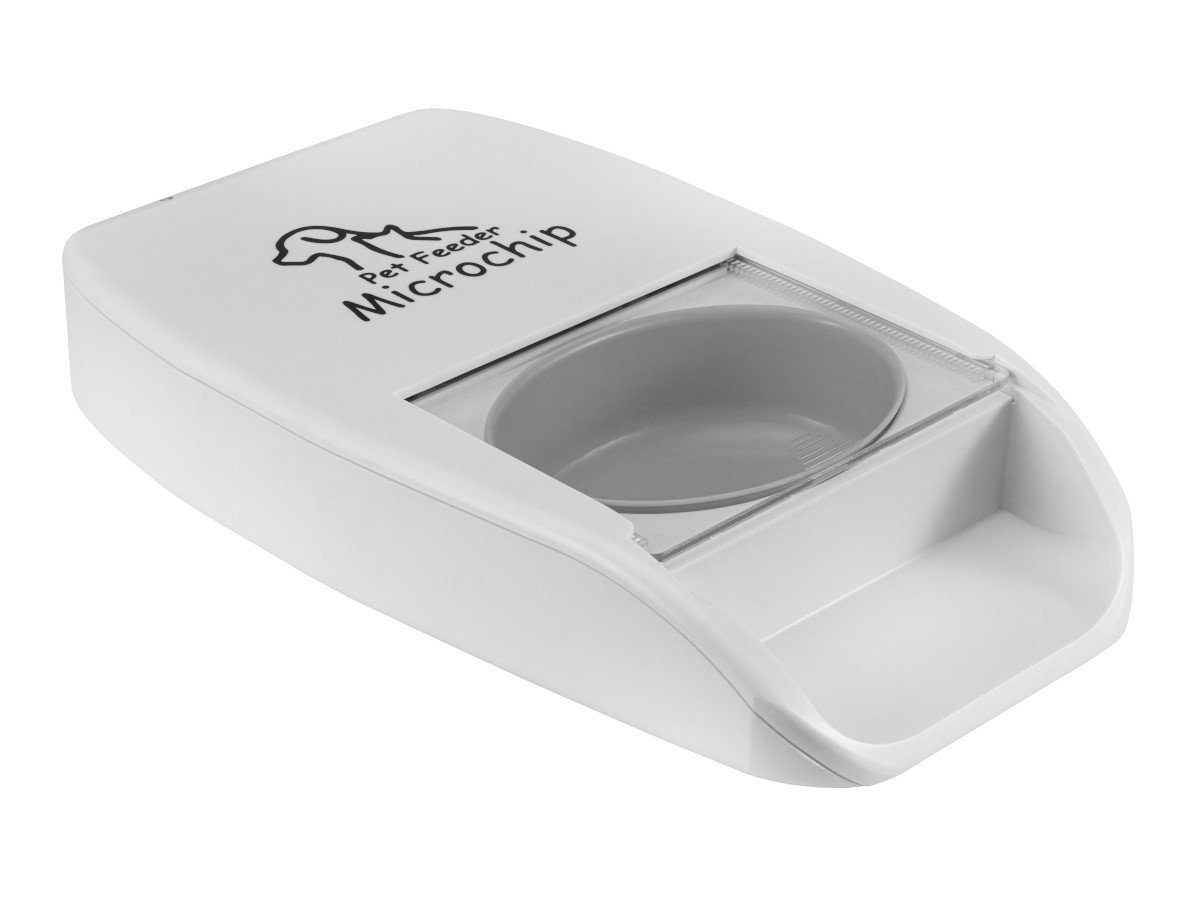

You should see the red LED light up as follows: If ESPHome Flasher displays an error when trying to connect to the device, try swapping over TX and RX and try again.Īfter successful programming, disconnect and re-apply power.


Once the board has started programming, and you see progress in the ESPHome Flasher application output window, you can (optionally) release the push button. Keep holding the button, and start the programming process from ESPHome Flasher.Press and hold the button on the PCB and at the same time, apply power to the board.For my install, the output bin file is: \spf-1010-ty-pet-feeder\.pioenvs\spf-1010-ty-pet-feeder\firmware.bin This can be found by looking at the compile output (see photo). Navigate to the output directory, and copy the *.bin file.Once this has been done successfully, further future updates can be done wirelessly, Over the Air!
#Cat rfid feeder serial#
This is done with the USB to Serial converter. script.wait: flash_pos_switch_error # position sensor error takes priority over this script. # Do nothing until the position switch turns off the motor. script.execute: motor_overrun_protection # Script will restart if it's already running. # If this script runs for > 4 secs, the motors will be stopped and a error logged. # This script will be stopped by the motor position switch. id: run_motor # A script that runs the motor. # Flash an error and log an error message.įormat: "Motor overrun!! Check motor position switch or clear jam!" # If the motor is still running, an error occurred (position switch faulty or jammed) id: motor_overrun_protection # A script to stop the motor if it runs too long # The position switch is ok, clear any error. switch.turn_off: motor_drive_a # Turn off motor.įormat: "Position switch released - stopping motor." script.execute: flash_motor_running_led switch.turn_on: motor_drive_a # Turn on motor. platform: gpio # Physical button on unitįormat: "sw_user_btn pressed. script.execute: run_motor # Run the motor. If( id(run_motor).is_running() ) Run even when jammed"įormat: "ha_run_even_when_jammed on_press. # Enable fallback hotspot (captive portal) in case wifi connection fails This will try to connect to the device over WIFI and will fail.
#Cat rfid feeder code#
Īpi_pwd - only required if Home Assistant uses a password for ESPHome API access.Ĭompile the code by clicking the 'upload' button.ota_pwd - a password to protect OTA updates.Remember to setup the following details in your secrets file: Paste in the YAML from the attached file, change the WIFI credentials and IP address to something suitable for your network. I called my project "spf-1010-ty-pet-feeder" This doesn't require HomeAssistant, but not every solution does.Within ESPHome, create new project. The best part of this solution is the ability to provide any type of food (wet/dry/both) as well as a very easy way to clean the bowls inside (just as easy as removing the bowls and putting in the dishwasher). If you are looking for a cheaper solution that would work well, you could see if you can find a cheap microchip cat door on facebook marketplace in your area. You can leave the food in there as long as the cat needs to eat without another animal getting in there to eat it or steal from the cat (which happens with very food motivated animals). They are not cheap but I think they will work better for you than a feeder. What we did was make two cat food boxes (one for each cat) using a cheap plastic box big enough for the cat and food as well as a microchip controlled cat door ( like in this video). The bigger issue is that cats are also finicky eaters and can change their mind about the food they are used to. I'm a programmer and handy enough with electronics to be dangerous, but not sure if this is something I should even attempt or just suck it up and try to hawk over meal times better when the cats are eating.Īnybody attempted anything like this or have any brilliant ideas?!? Thanks! Hacked to respond to both cats' chips (I know this is probably the tricky part as the signal seems to require pretty close proximity) or maybe an RFID tag on a collar such that depending on time of day, it will give them a serving of wet food when they come by, and close up when they leave. What would be perfect is something like this:

We have two cats, so it's really hard to control how much each eats, depending on who gets to food first, and who cleans up the leftovers.įor like $250 you can buy a RFID/chip activated wet food feeder for ONE cat, but that seems ridiculous. We have a timed dry food feeder, but vet says wet food is better and she needs fewer calories. Our vet says our 1yo cat is getting a little too heavy and needs to go on a diet.


 0 kommentar(er)
0 kommentar(er)
